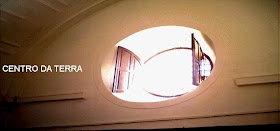22 setembro 2011
13 setembro 2011
François Cointeraux (1740-1830)_Pioneer of Modern Earthen Architecture_Conference

FRANÇOIS COINTERAUX (1740-1830)
PIONEER OF MODERN EARTHEN ARCHITECTURE
Theory, Teaching and Dissemination of a Vernacular Technique International Conference, Lyons, 10-12 May 2012
Organized by the Laboratoire de Recherche Historique Rhône-Alpes (LARHRA, UMR-NRS 5190) and the Institut National d’Histoire de l’Art
From 1785 onwards, the builder and master mason François Cointeraux actively promoted a construction technique of vernacular origin, known as pisé de terre (or ‘rammed earth’), which was at that time confined to southeast France.
His cahiers or fascicules from the Ecole d’architecture rurale (School of Rural Architecture), published in Paris in 1790-91, were rapidly translated into seven languages (German, Russian, Danish, English, Finnish, Italian and Portuguese). They attracted the attention of major architects such as Henry Holland (1745-1806) in England, Thomas Jefferson (1743-1826) in America, David Gilly (1748-1808) in Germany and Nicolaï L’vov (1751-1803) in Russia, founder of a flourishing school of earthen architecture in Tiukhili near Moscow, based on Cointeraux’s school of the Colisée in Paris.
Through his publications, Cointeraux generated an almost universal interest for this material, as cheap as it was abundant, and encouraged its adaptation to rural or residential architecture. This success can largely be explained by a desire to revive rural architecture, which was in perfect harmony with both the physiocrats’ line of thought and the actions of agricultural societies.
However, Cointeraux never managed to popularise its use widely and lastingly in France. His numerous publications did not achieve their expected uptake with the institutions concerned. He is nonetheless representative of a culture of invention and innovation, highly characteristic of the first industrial revolution and the birth of modern architecture. The aim of the conference is to present a synthesis of the extensive research carried out on François Cointeraux over the course of the last twenty years and to re-situate his work in the wider context of the evolution of ideas and techniques.
T H E M E S O F T H E C O N F E R E N C E
1. The life, crafts and social ambitions of François Cointeraux
By turn builder, architect, teacher, inventor, writer, publicist and propagandist, François Cointeraux sought recognition in a milieu that was not his own, as a teacher of architecture and inventor who had contributed to the progress of mankind.
If he failed to acquire institutional legitimacy and to benefit from the long-term public support to which he aspired, his social engagement with the avant-garde of therural world following the Revolution heralded the social utopias of the nineteenth century. His militancy, in propagating his ideas, reveals a real pleasure in writing, a degree of inventiveness and a strong sense of formulation, all of which are undercurrents of his abundant printed output.
2. The pisé and the ‘new pisé’, between tradition and invention
Cointeraux became first acquainted in the middle of the eighteenth century with the technique of pisé as a practitioner and entrepreneur in his native
3. Architecture and the rural world, agritecture as a comprehensive project
Even though building in pisé or rammed earth occupied a central place in his activities as an architect, the published works of François Cointeraux show an extension of his reflections and his commitment to a variety of questions concerning the rural world, which he envisaged as a comprehensive, all-encompassing project. He named this new discipline agritecture, and he wanted to dedicate a periodical to it. I
t incited in Cointeraux an economic thought process – ecological even (well before the term came into existence) – on agriculture, rural constructions and agricultural life. His ideas on breeding, feeding and heating fit into the wider framework of a general theory, inherited from physiocratic economic thought, fashionable in France in the second half of the eighteen century.
4. International diffusion and reception
Cointeraux’s ambitions and his concern for recognition were continually stymied in
5. The legacy and inheritors
The techniques for earthen construction promoted by Cointeraux were almost immediately taken up by Jean Rondelet in his Traité de l’art de bâtir (Treatise on the art of building), which henceforth gave them important and lasting exposure in the leading technical book on architecture of the first half of the nineteenth century.
Construction in rammed-earth provided answers for the improvement of agricultural buildings, which was one of the great collective enterprises of the era, and a new field for architects. But more importantly, allied with the progress made in the understanding of chemical phenomena and in the production of mortars, the technique of pisé also opened the way for a revolution in the art of building: the invention of reinforced concrete.
Cointeraux conference call for papers
11 setembro 2011
Ronald Rael_Interview at MYOO

Mud-brick house of ancient caravanserai. Photograph taken by Diane Stocklin.
ResTapia 2012_21/23Junho2012_Valência

The official languages of the congress will be English and Spanish. We would like you to present a paper and participate in the congress.

























![Terra [In]cognita project: Earthen architecture in Europe](http://1.bp.blogspot.com/-36uMVOoZMLE/TazQAiZE1KI/AAAAAAAAByA/NCxO8IKqLTg/s285/logoterraincognita.jpg)
